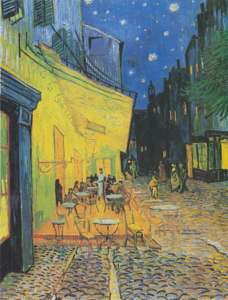… it’s not an easy question. From the dictionary:
Art /ɑːt/: human activity aimed at creating works that have an aesthetic value, by means of shapes, colors, words, sounds or other media: the art of sculpture, painting, poetry, music; museum of modern art; art history.
I prefer to change the point of view: art is the “product” of an artist; an artist is a human that consciously or unconsciously feels the need to interact with the reality by adding “something new” to it: an object, an experience, a performance; and this “something new” – the artwork – can have a life of its own albeit for a limited time.
The artwork starts as an idea inside the artist; it’s a like seed that grows undeground more or less quickly until (if it’s lucky enough) it sticks out of the ground. During the creation process the artwork gradually separates from the artist and starts interacting with him, with other people and with the outside reality as an independent entity. This interaction is both physical and metaphysical. A great artwork (piece of art) is able to have a strong interaction with the reality, that can also continue, grow, develope and change for a long period of time, even centuries.
Note that the artwork is somewhat immutable (or immutable in its mutability if it is was created with particular techniques); what changes is the external reality and the way people relate to it.
The conscious or unconscious motivations that lead an artist to create can be different and are often mixed together, for example: use the artworks as a new and deeper way to communicate with others; doing something that makes feel happy and satisfied; creating something that is beautiful and pleasent for the others; as a way for a better self-knowledge; aim to immortality; and so on.
It’s possible that the original intention of the artist is to represent the reality, but this representation is not a mere copy; the artist sees and lives the reality in his personal and intimate way and the artwork can reveal, enhance, share or complement aspects of the reality that other people may or may not view or interpret in the same way.

Van Gogh – Café Terrace at Night

Hokusai – The Great Wave
